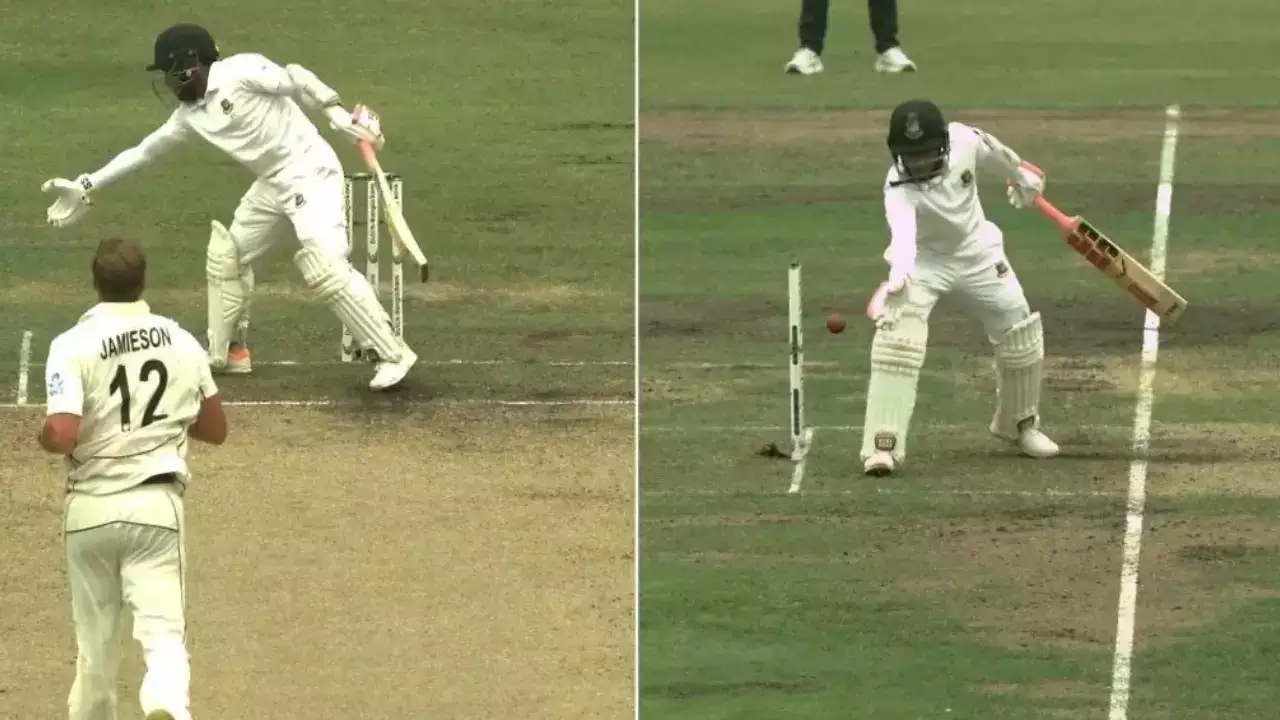In the riveting clash between Bangladesh and New Zealand in the 2nd test of the series in Dhaka, the cricketing world witnessed an intense battle where Bangladesh secured a 1-0 lead. The stakes were high, and every moment held significance. However, it was a particular incident involving Mushfiqur Rahim that stole the spotlight during the first day of the test.
Right from the outset, Bangladesh set the tone by winning the toss and electing to bat first. The decision to face the Kiwi attack head-on showcased their strategic approach, aiming to capitalize on home-ground advantage and set a formidable total.
The turning point came during the second session when Mushfiqur Rahim, a seasoned campaigner, found himself at the centre of controversy. In the 41st over, Rahim attempted an unconventional move by using his hand to block the ball, resulting in a penalty for obstructing the field. This unexpected manoeuvre not only surprised the Kiwi players but also triggered protests, setting the stage for a significant debate.
The terminology used to describe Rahim’s dismissal is noteworthy. Contrary to the expected ‘handling the ball,’ the official ruling cited ‘obstructing the field.’ Understanding the nuances between the two is crucial, especially considering the evolution of cricket laws in 2017 by the Marylebone Cricket Club (MCC).
In 2017, MCC revised the laws governing dismissals, expanding the ‘obstructing the field’ category to include instances of ‘handling the ball.’ This reclassification was a departure from the traditional eleven modes of dismissal in cricket. As a result, Rahim’s unconventional tactic fell under the ‘obstructing the field’ category.
Why Mushfiqur Rahim Was Given Out As ‘Obstructing The Field’ And Not ‘Handling The Ball’?


To comprehend Rahim’s plight, it’s crucial to delve into the intricacies of the two laws. According to MCC, a batsman is considered out ‘obstructing the field’ if, in the act of receiving a ball from the bowler, they wilfully strike the ball with a hand not holding the bat. This includes both the first strike and subsequent strikes, extending to both playing at the ball and striking it more than once in defense of their wicket.
The key distinction lies in the historical classification of such dismissals as ‘handled the ball.’ However, the 2017 law tweak repositioned these rare instances under the broader umbrella of ‘obstructing the field.’ This shift reflects a strategic move by cricketing authorities to streamline and modernize the sport’s rules.
Mushfiqur Rahim’s name is etched in cricket history not only for this controversial dismissal but also for being one of eleven players caught tampering with the ball in international cricket. This raises questions about Rahim’s approach and the need for a comprehensive understanding of the rules governing the sport.





